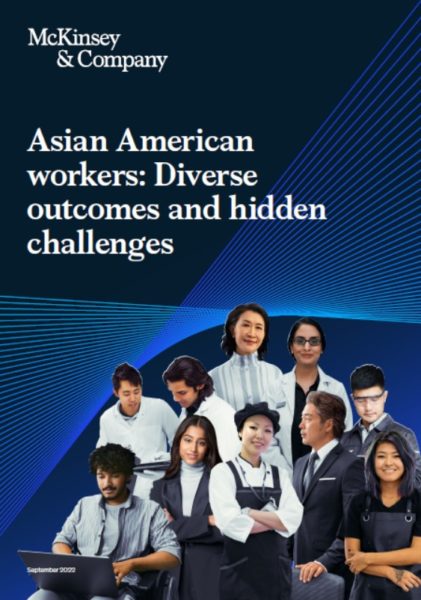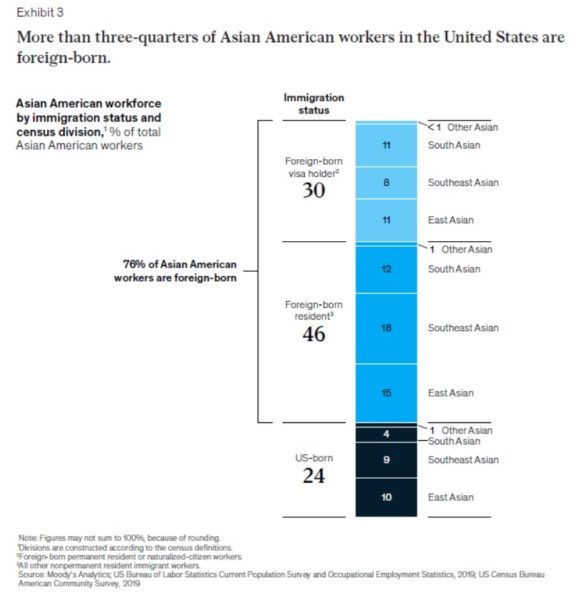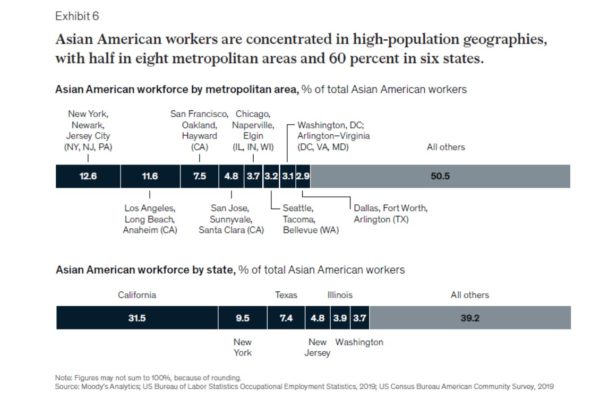Earlier in September, the management consulting firm McKinsey & Company published this Executive Briefing: ‘Asian American workers: Diverse outcomes and hidden challenges’:
“Events since the start of the COVID-19 pandemic, including the murder of George Floyd and the rise in anti-Asian violence, have increased the prominence and urgency of diversity, equity, and inclusion in the public conversation, including in the C-suite. Against this backdrop, our new report, Asian American workers: Diverse outcomes and hidden challenges, may be long overdue.1
While visible acts of violence against Asian Americans have garnered headlines, Asian Americans’ distinctive challenges at work have often been overlooked. The stakes of violent attacks and workplace challenges are different, but they have common roots in stereotypes and misconceptions about Asian Americans as perpetual foreigners—that is, outsiders. In our report, we use data and analysis to dispel these misconceptions, acknowledge the accomplishments and contributions of Asian Americans, and propose next steps for leaders and organizations. More research needs to be done, but our goal is to spark an expansive, ongoing conversation about better inclusion and advancement for Asian Americans at work.”
I would agree that Asian Americans are often overlooked in the corporate world, especially when it comes to leadership – the often discussed ‘bamboo ceiling. this is particularly sad given Asian American’s outsized contributions to the American economy.
There’s a ton of interesting data in the report. Here are a few highlights:
It’s no surprise that there is the “perpetual foreigner” syndrome for Asian Americans, as more than 75% of Asian Americans have been born outside of the United States. I think this has to do with also the fact that most Asian American immigration has happened in the past 20 to 30 years.
There are so many Asian Americans in the workforce in the San Francisco Bay Area, that they broke the region into two different areas!
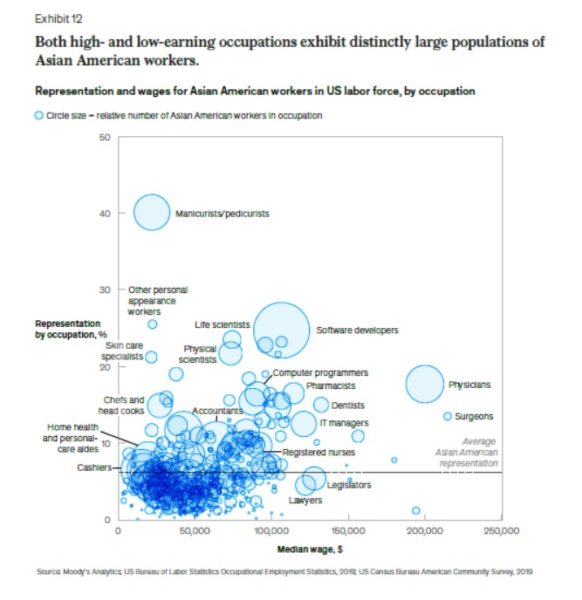 This breakdown by income, professions, Asian American representation and number is quite interesting. It may surprise some, but there is great income inequality in the large and diverse Asian American category.
This breakdown by income, professions, Asian American representation and number is quite interesting. It may surprise some, but there is great income inequality in the large and diverse Asian American category.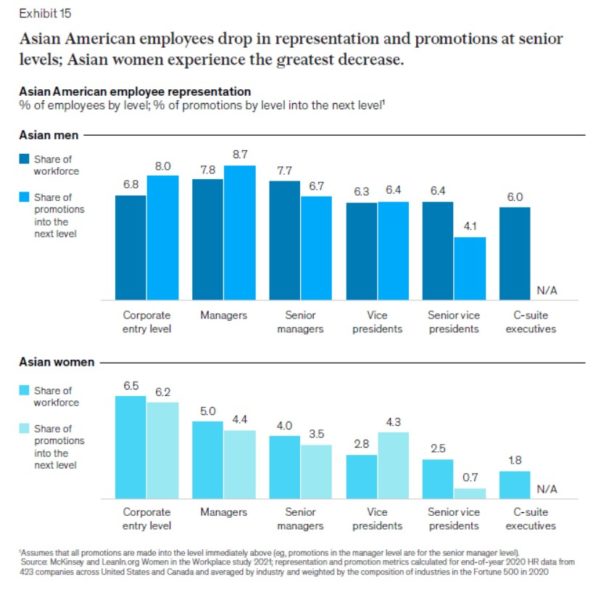
And finally, I don’t think anyone is surprised by this final Exhibit. It will be interesting how this changes over time, and what drives that change.
You can download the full McKinsey report here.

